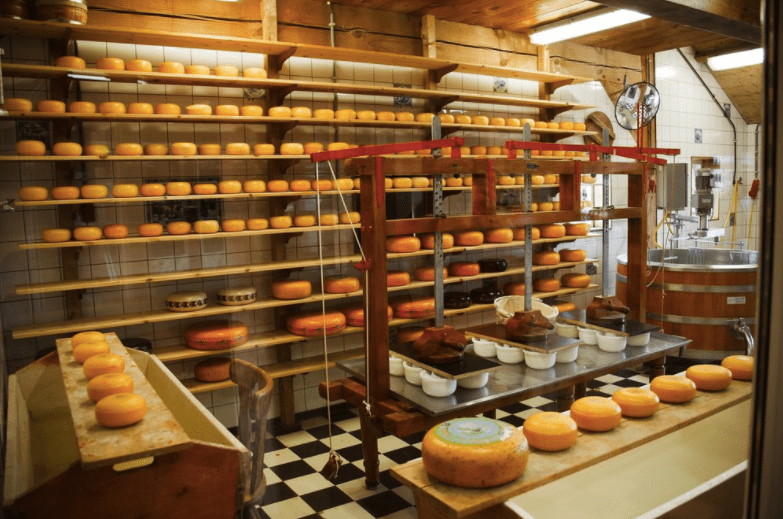BMC Part Thirteen: Testing
(If you’re using the Canvas, you’ll love my free Business Modelling eBook, full of tips for inventing and testing ideas that will change the world)
Does the idea of running a test make you nervous?
Are you hoping to avoid having to call up customers and make a pitch?
I get it.
It makes me nervous too.
A test is essentially a mini-confrontation for an entrepreneur.
Our hopes and ambitions come up against the self-centred indifference of our customers, and the results aren’t always inspiring.
But let’s change the way we look at this situation:
The confrontation will happen at some point.
Would you like it to be early, before you’ve sunk a lot of time, money and reputation into the idea?
Or would you rather invest into the business, buy equipment and train staff, only to then discover that your forecasts were way off?
Testing sounds risky, but it actually reduces risk.
Finding a flaw is cause for celebration, because we get to address the issue early.
Better yet, it’s not a broad “The business doesn’t work” type of statement, but a more precise diagnosis as to where we need to make a change.
Testing helps us pinpoint which elements are going well, and which ones require some innovation.
What should I test?
The idea is that we test the most critical assumptions.
In other words: Which assumptions, if wrong, would be disastrous?
Let’s look at some examples, and see if any of these would be good for your business.
Have we validated market size?
We want to be confident in the depth of our customer base, that we won’t serve all of our potential customers within the first two months.
This can be done through research, or through shadow testing – building a registration page for your customers before the enterprise actually exists.
Crowdfunding is another great tool, allowing you to develop a sense of how many paying customers are interested in your idea.
Have we validated our value proposition?
Do our customers like our value proposition enough to pay for it?
Are they willing to put money down now in order to secure their spot in line?
Pre-orders and crowdfunding are great, as they demonstrate our customer’s willingness and ability to pay.
If we get a lot of traffic but no sales, then our value proposition isn’t quite good enough (or we’re talking to the wrong customers).
Have we validated our partnership agreements?
Just because people have made nice verbal offers to us in the past doesn’t mean they’re locked in.
For our Key Partners and suppliers, we want to be confident that they’re still excited about working with us.
This avoids a last minute panic, when we have customers lined up and no partner to help fulfil their orders.
A Memorandum of Understanding (MoU) is a useful tool, having each party state in writing that they agree to a particular set of terms, e.g. price, quantities, turnaround times, exclusivity, etc.
Have we validated our ability to deliver?
On paper, it’s easy to ramp up production and serve many customers at once.
In reality, it might be a complete mess.
By starting small and scaling up gradually, we can test our ability to deliver products and services to customers under pressure, and quickly learn what skills/equipment/technology/partnerships are required to make the business run smoothly.
Have we validated our price points?
The right pricing structure can make or break a startup.
Too low and we miss out on a surplus, too high and we scare customers away.
We want to test what happens if our prices were a little higher or a little lower.
It may mean we decide to drop prices in exchange for more sales.
It may mean we decide to raise prices substantially; fewer sales with much higher total revenue.
These tests can be done in person, or by A/B variations online that show different prices to half of your audience, and measuring their different behaviour.
Image Credit: Strategyzer, www.strategyzer.com
How to design an experiment
The easiest way to think about these questions is with the Strategyzer Test Cards.
This is a single page that prompts you to articulate what you’re looking to define, how you’ll know if you’re correct, and what you’ll measure.
Each test should measure one thing, and have a clear pass/fail criteria set out at the start.
This avoids ambiguity and misdiagnosis, or the temptation to “shoot the arrow and paint the target around it”
We also need to ensure we have the right sample size – enough customers that we’re confident that their answers are representative of the broader community.
For reporting back to your team, the Strategyzer Learning Card is a nice summary of your findings.
Image Credit: Strategyzer, www.strategyzer.com
Setting up Gates
As much as we want the new business model to succeed, we don’t want to be blinded by optimism.
Instead, we need to prove the idea to ourselves, as well as our team and our investors.
A gate is a neat way of tracking successful tests.
It’s a simple, conditional statement that sets some criteria for moving forward, such as:
“Once we have 500 customers who have pre-ordered, we’ll begin production”
“Once we raise $90,000, we’ll hire our next team members”
“If we can get these three partners to sign MoU’s, we’ll go live with the website”
If the idea makes it through the gate, we’ll celebrate and charge towards the next hurdle.
If not, then we celebrate a little as well.
We’ve just avoided disaster, and can work out what sort of pivot we need in order to get back on track.
In Part Fourteen, we get to play with the What If? questions…
This is a multi-part series on the Business Model Canvas.
If you’d like to jump straight to a particular section, go to:
Overview: How To Use The Business Model Canvas
Desirability: Customer Segments, Value Proposition, Customer Relationships, Channels
Feasibility: Key Resources, Key Activities, Key Partners
Viability: Cost Structure, Revenue Streams
Then once you've made your first Canvas:
Reviewing: After Your First Model, Alarm Bells
Reinventing: Testing, What If?
Improving: Metrics, The Business Model Environment
Extensions: Pitching, Social Impact, Making It Great, What Next?













